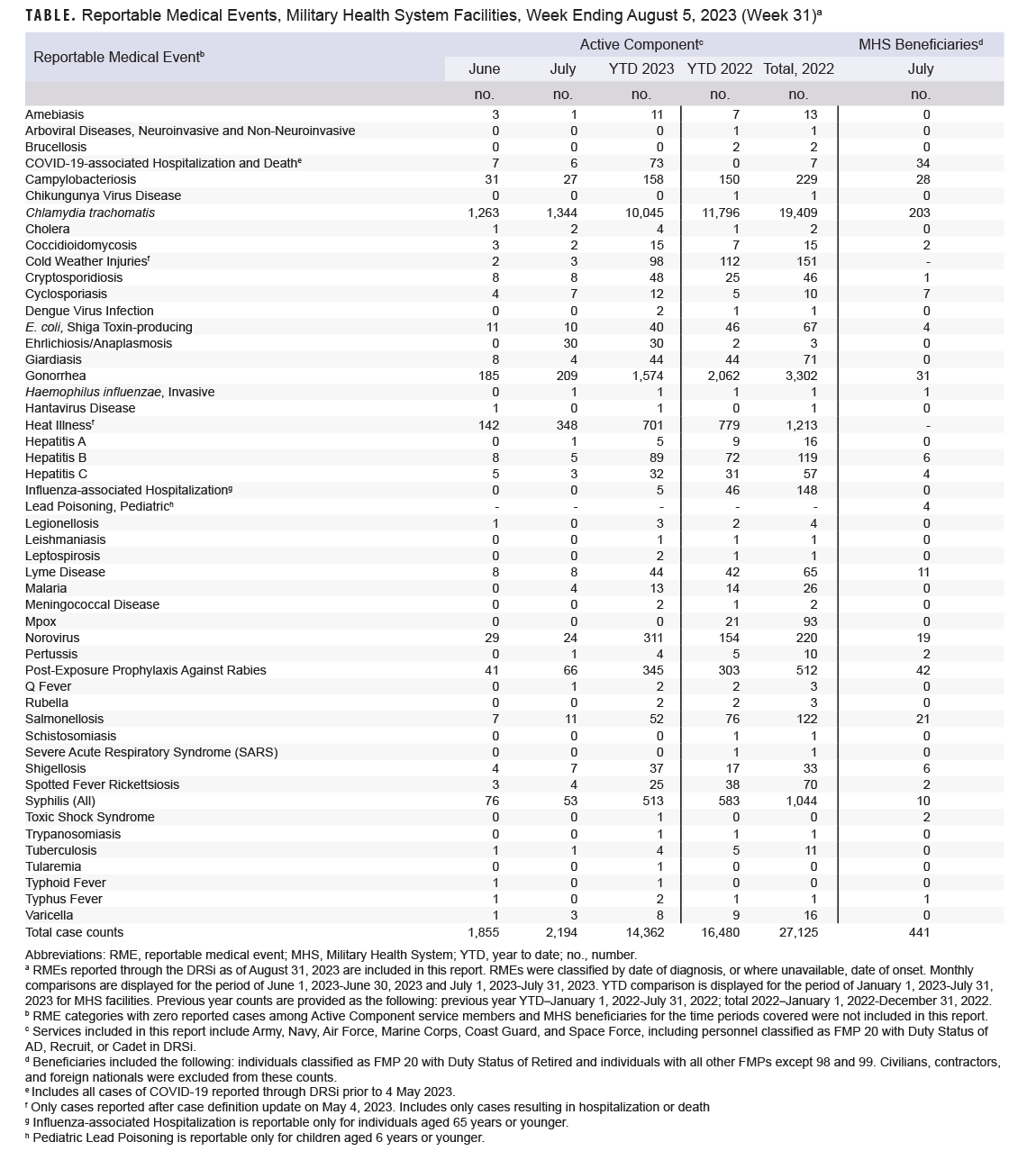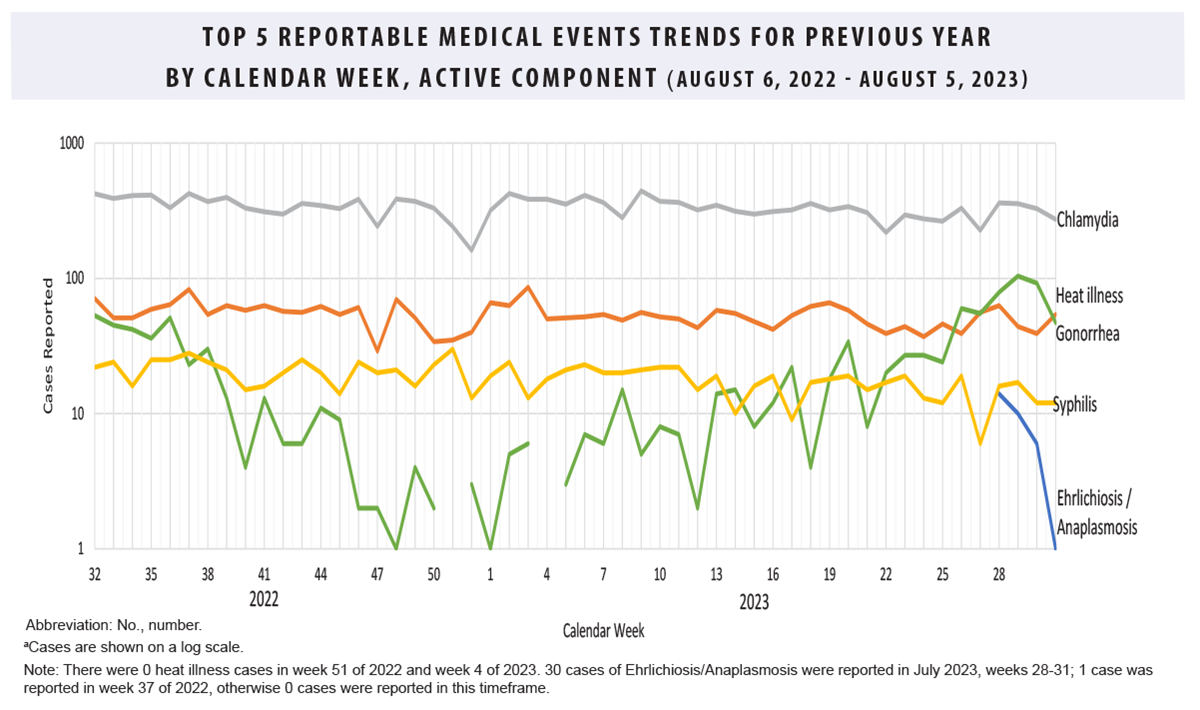Reportable Medical Events are documented in the Disease Reporting System internet by Military Health System providers and public health officials to monitor, control, and prevent the occurrence and spread of diseases of public health interest or readiness importance. These reports are reviewed by each service’s public health surveillance hub. The DRSi collects reports for over 70 different RMEs, including infectious and non-infectious conditions, outbreak reports, STI risk surveys, and tuberculosis contact investigation reports. A complete list of RMEs is available in the 2022 Armed Forces Reportable Medical Events Guidelines and Case Definitions.1 Data reported in these tables are provisional and do not represent conclusive evidence until case reports are fully validated.

Total active component cases reported per week are displayed for the top five RMEs for the previous year. Each month, the graph is updated with the top five RMEs, and is presented with the current month’s (July 2023) top five RMEs, which may differ from previous months. COVID-19 is excluded from these graphs due to changes in reporting and case definition updates in 2023.

In July 2023, 28 cases of ehrlichiosis and anaplasmosis were reported from a single Army reporting unit between weeks 28 and 31. Most cases (n=27) are classified as suspect, with one confirmed case. Dates of onset range from June 5 to July 13, 2023. Etiologic agents listed include Ehrlichia ewingii (n=14), Ehrlichia chaffeensis (n=6), Panola Mountain Ehrlichia (n=6), and undetermined or unlisted ehrlichiosis or anaplasmosis (n=2). All individuals had tick bites, which were documented, while attending Cadet Summer Training at Fort Knox, KY. The majority (n=26) of individuals did not present with any symptoms of infection but were advised to inquire about prophylactic treatment.
Author Affiliations
Defense Centers for Public Health–Aberdeen, Disease Epidemiology Branch
References
- Armed Forces Health Surveillance Division. Armed Forces Reportable Medical Events. Accessed September 6, 2023. https://www.health.mil/Military-Health-Topics/Health-Readiness/AFHSD/Reports-and-Publications/Armed-Forces-Reportable-Medical-Events
- Defense Manpower Data Center. Department of Defense Active Duty Military Personnel by Rank/Grade of Service, October 31, 2022. https://dwp.dmdc.osd.mil/dwp/app/dod-data-reports/workforce-reports
- Defense Manpower Data Center. Armed Forces Strength Figures for January 31, 2023. https://dwp.dmdc.osd.mil/dwp/app/dod-data-reports/workforce-reports
- Navy Medicine. Surveillance and Reporting Tools—DRSI: Disease Reporting System Internet. https://www.med.navy.mil/Navy-Marine-Corps-Public-Health-Center/Preventive-Medicine/Program-and-Policy-Support/Disease-Surveillance/DRSI